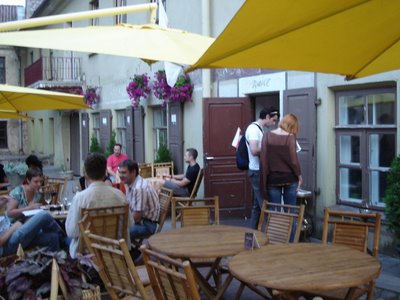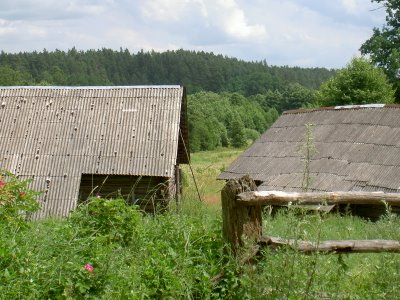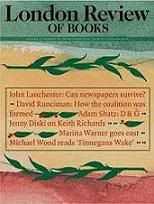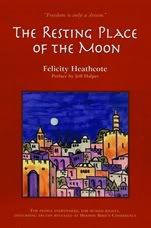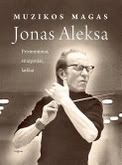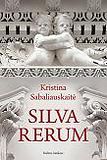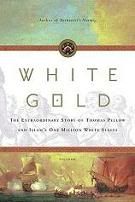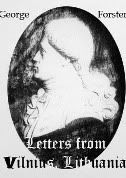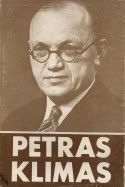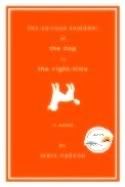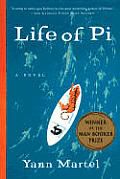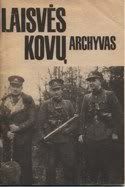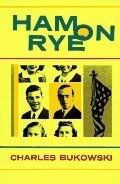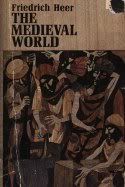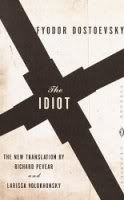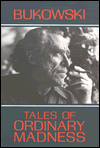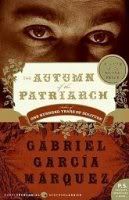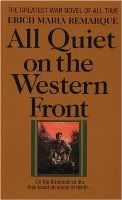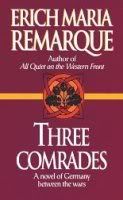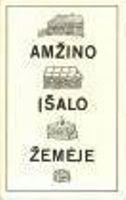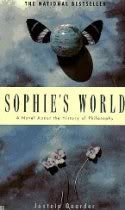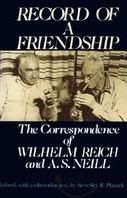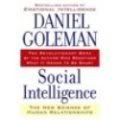Thursday, July 15, 2010
Monday, July 12, 2010
Sunday, July 11, 2010
President Eisenhower's parting words to the Nation were: "Beware of the military-industrial complex."
Words that fell on death ears, in my opinion, because we are ruled by the military-industrial complex today.
Words that fell on death ears, in my opinion, because we are ruled by the military-industrial complex today.
Sunday, March 28, 2010
Someone recently asked me what is wrong with the world
Lack of love to children.
Lack of respect for knowledge.
Values that are upside down.
Respecting money more than anything else.
Don't get me started...
Lack of respect for knowledge.
Values that are upside down.
Respecting money more than anything else.
Don't get me started...
Saturday, December 27, 2008
Happy Holidays!!
Open up, oh listeners,
Speak up, oh disappointed,
Embrace the waiting,
Embrace us all....
Look back, flying ones,
Leaving ones, stop,
Wave to the rising,
Not the loved ones, but the loving...
Speak up, oh disappointed,
Embrace the waiting,
Embrace us all....
Look back, flying ones,
Leaving ones, stop,
Wave to the rising,
Not the loved ones, but the loving...
Wednesday, October 31, 2007
Thursday, July 19, 2007
Re: Our conversation about right livelihood. . .
Here's a quote from Rainer Maria Rilke:
"Live your questions now,
and perhaps even without knowing it, you will live along some distant
day into your answers".
"Live your questions now,
and perhaps even without knowing it, you will live along some distant
day into your answers".
Monday, October 02, 2006
Thursday, September 21, 2006
Wednesday, August 23, 2006
Saturday, July 29, 2006
Quote from my inbox today. . .
No matter how corrupt, greedy, and heartless our governments, our corporations, our media, and our religious and charitable institutions may become, the music will still be wonderful. If I should ever die, God forbid, let this be my epitaph: THE ONLY PROOF HE NEEDED FOR THE EXISTENCE OF GOD WAS MUSIC.
Kurt Vonnegut
A Man Without a Country
Kurt Vonnegut
A Man Without a Country
Thursday, June 29, 2006
Friday, June 23, 2006
Happy Midsummer's Eve!

Over eons of time mankind noticed that one day was the longest day of the year. Therefore, on that day they decided to celebrate. All men and women were preordained to make love and all the ones who were left over were preordained to be killed. All the leftovers of every species were rounded up to be hung if they were animals, or hanged, if they were humans, on the boughs of oak trees. The pressure to ensure that twelve of each species of animal and plant life were included must have put a terrible strain on each tribe or village, as some of them might have not been able to have so many redundant people to sacrifice.
Thus, the evening became a festival of anguish and orgies. The ones hanging on the trees were of course anguished to be slowly choking to death, while the happy people on the ground groped each other while trying to prove their prowess and prolong their climax. Finally, things died down around midnight when all the men and women and surviving animals came out for a respite and a midnight snack. And that is how a midsummer Night’s Feast was born.
Saint Jonas' Festival (Joninės, St. Jonas Day, Rasos, or Midsummer Day) is celebrated on June 23 in Lithuania. We have particularly lively traditions this evening, including dancing and jumping over fires, drinking beer and midus, or meade made from honey, playing songs until the sun sets, then floating grass wreaths on the water, singing songs, telling tales, and searching to find the magic fern blossom at midnight. Of course, for many of the younger set, this is only the beginning. In the morning, there is probably no hay loft or grassy knoll left in the country without an imprint of loves labour left behind. Su Joninem!
Friday, June 16, 2006
The Good Old Days

 Ancient times come alive in Lithuania this weekend. When people can visit farms and villages all over the country and learn to bake bread the old fashioned way, brew beer and mead, learn to weave, pick mushrooms, go fishing, ride around the country side in horse-drawn carriages, sing folk songs around the camp fire, dance, and of course make love and sleep in hay lofts.
Ancient times come alive in Lithuania this weekend. When people can visit farms and villages all over the country and learn to bake bread the old fashioned way, brew beer and mead, learn to weave, pick mushrooms, go fishing, ride around the country side in horse-drawn carriages, sing folk songs around the camp fire, dance, and of course make love and sleep in hay lofts.
Friday, May 26, 2006
The History of Lithuania
 Lithuanian Prehistory
Lithuanian PrehistoryBaltic Man – Homo balticus, theory of meeting of Cro magnon and Lungby man (? – from Denmark) in the vicinity of today’s Hannover and migration east along shores of the Baltic.
Evidence from the Mesolitic Period (8000-3500 B.C.)
Neolithic cultures (3500-2000 B.C.)
Pre-Indoeuropean agricultural groups, early Indoeuropean culture based on archeological and linguistic evidence.
Oldest Indoeuropean language.
Cognates with Sanskrit, Greek, Latin
Migration of the Balts.
Proto-Balts.
Broze Age (1600-500 B.C.)
Early Iron Age.
Origins of the Lithuanian Nation
Relation of the Lithuanians with the Herulli.
Theoretical Thracian and Phrygian origins.
Roman state theory
Palemonus, either an explorer or fleeing persecution in time of Seneca, founds settlement on the site of today’s Kernave, on the banks of the Neris River. ‘Lietuva’ – ‘Litubi’ derived from aboriginals sitting on the banks, or litoral, of the river, playing on reed pipes – tubi. (The simple contemporary explanation is that the name ‘Lietuva’ is derived from the word ‘lietus’ – ‘rain,’ for “land of rain,” although rainfall is no higher than in neighboring countries.)
First millennium A.D.
Differentiation of the Balts.
Boundaries.
Commercial relations with others.
The Lithuanian State
Establishment of the duchy.
Development of the Lithuanian Grand Duchy.
Gediminas and his dynasty.
Expansion in the East.
Feudalism.
Union with Riga.
Target of the Crusades.
Teutonic Knights.
Livonian Order.
Union with Poland
Diarchy
Internal strife
The Kreva Alliance
Consequences
The rise of Vytautas
Impact on Russia
Decline of the Teutonic Knights
Battle of Zalgiris (Grunwald)
The rule of the nobility
Election of Casimir
Opposition to the union with Poland
Growth of the landed gentry
Aggression from the Duchy of Moscow
Social stratification
Reforms
Administrative
Agrarian
Protestant Reformation
Renewed wars with Moscow
The Union of Lublin
The Commonwealth of the Gentry
Stephen Batory
Successful defense against Moscow
Western influences
Renewed warfare with Moscow
The Russian occupation of 1655
Internal unrest
Nobility dissatisfied
The North War
Russian intervention
Collapse of the Commonwealth
Efforts of revival
Partitioning
Lithuania in the 19th Century
Cultural growth after partitioning
Old society vs. new state
The War of 1812
Influences of the Enlightenment
New Education
Samogitia
National strivings
The role of the university
The uprisings of 1831, 1863
Continued resistance
Rebirth of nationalism
The fight for the Lithuanian language
Clandestine press
Successful resistance to the Cyrillic alphabet
Involvement in the upheavals of 1905
World War One and its aftermath
German Army Frei Korps freebooters -- ‘Bermontininkai’
1918 and Independence
The Republic Prior to World War Two
East Prussia
Early history
Emanuel Kant, Kristijonas Donelaitis
Klaipeda (Memel) Mandated to Lithuania
Hitler’s ultimatum and the seizure of Klaipeda
Karaliaucius-Konigsberg-Kaliningrad
Relations with Poland
Polish occupation of Vilnius
Smetona and the Coup d’Etat of 1926
The Baltic States Entente
The “New Jerusalem” – Lithuanian Jewry
The Ribbentrop-Molotov Pact
Stalin’s ultimatum and Soviet occupation
Sovietization
The reign of terror and mass deportations
The 1941 revolt
Nazi Occupation
Armed resistance
Administrative resistance
The Holocaust in Lithuania
Refusal to form an S.S. Legion
The Return of the Soviets
Forced collectivization
Arrests and genocide
The NKVD and its methods
Lithuanians in the Gulag
Industrialization in a planned economy
Russification
Religious persecution
“Brothers of the Forest” – Partisan Resistance, 1944-53
Diminished armed resistance until 1977
Soviet military operations
Missions to the West, waning hope and betrayal
The Lithuanian Diaspora
Siberia, escape to Displaced Persons’ camps, America, Australia, Argentina, Colombia, Germany
The Dissidents and Underground Resistance, 1967-90
The Lithuanian Soviet Socialist Republic
“Building Socialism”
First to break away from the USSR
“Sajudis”
New independence: EU, NATO
The Crossroads of Europe
 The precise Geographic Center of Europe has been determined to be forty kilometers south of Vilnius. About two hundred kilometers to the east of Lithuania, separated by a section of Latvia, lies Russia proper. Also bordering Lithuania to the west along the Baltic Sea is a section of land now belonging to Russia, but was once the domain of Lithuanian-speaking tribes, the Aisčiai and the Kuršiai. To the Lithuanians, it is Lithuania Minor, Germans conquered it and called it East Prussia. After the Second World War, its capital, Karaliaučius (karalius – ‘king’), changed to K?nigsberg by the Germans, along with its surrounding area, was renamed Kaliningrad and made a part of Russia. Neighboring Lithuania on the north is Latvia, whose language is Baltic, and very similar to Lithuanian. Poland neighbors Lithuania on the west. To the south is Belarus, much of whose territory was once ethnically Lithuanian and ruled from the Lithuanian capital, Vilnius.
The precise Geographic Center of Europe has been determined to be forty kilometers south of Vilnius. About two hundred kilometers to the east of Lithuania, separated by a section of Latvia, lies Russia proper. Also bordering Lithuania to the west along the Baltic Sea is a section of land now belonging to Russia, but was once the domain of Lithuanian-speaking tribes, the Aisčiai and the Kuršiai. To the Lithuanians, it is Lithuania Minor, Germans conquered it and called it East Prussia. After the Second World War, its capital, Karaliaučius (karalius – ‘king’), changed to K?nigsberg by the Germans, along with its surrounding area, was renamed Kaliningrad and made a part of Russia. Neighboring Lithuania on the north is Latvia, whose language is Baltic, and very similar to Lithuanian. Poland neighbors Lithuania on the west. To the south is Belarus, much of whose territory was once ethnically Lithuanian and ruled from the Lithuanian capital, Vilnius.The dangers of lying in the center of Europe surrounded by big neighbors are well documented. Beginning with battles against the Teutonic Knights, successful in the main with crushing defeat for the Germans, but resulting in the loss of what has come to be known as East Prussia, and throughout much of its history, Lithuania’s existence can be said to have been a fight for independence. Ultimately, during the last almost five hundred years, its struggle has been for existence itself.
Lithuania’s place in the world took a disastrous turn after the 1569 Union of Lublin with Poland.
Lithuanians learned the nature of their union very quickly. In 1572, they attempted to assert equality with Poland by unsuccessfully agitating to have the last of the Gediminian Dynasty, Ann, the unmarried sister of the heirless Sigismund August, elected queen of the combined state of Lithuania-Poland. Through the next two hundred years, its increasingly polanized nobles and gentry struggled less and less successfully to maintain at least a semblance of self-rule. By 1795, and the third partition of Poland, all semblance of independence was lost and whatever lands Lithuania could at least nominally claim as belonging to it – still a large area encompassing all of Courland to the north, once the homeland of the Lithuanian tribe of Kuršiai, and stretching down to the borders of Ukraine, close to the Dniester River to the south – became nothing more than a province of Imperial Russia.
Even the centuries of Polish domination and Russian rule, were punctuated by periods of occupation by other foreign powers. Incursions by bands of drunken švedai, or Swedes (the name derived from the words žuv edai, or “fish eaters” (the Lithuanian ėdalis, ‘something edible,’ came before the Latin edulis, ‘eatable’), with the looting and burning of villages with all their inhabitants during a century or two of sporadic, brutal attacks and occupations, had been a fact of life since time immemorial. But the acts committed in the eighteenth century by the Swedish army commanded by Karl XII – memorable for their proclivity to asphyxiate children by pressing benches on their prone bodies, and for cutting off the breasts of teen-aged girls and young women – are still talked about in Lithuanian villages.
When the French invaded in 1812, they, too, plundered farms and burned down entire towns and villages, no doubt to the regret of the remnants of the Grande Armee straggling back in the freezing winter. While they were first hailed as liberators, and balls were held in their honor, by the time they retreated, the Lithuanians fought alongside the Russians to speed them on their way.
Russian rule of Lithuania was marked by exceptional cruelty in the periods 1795 to 1800, 1831 to 1836 and 1865 to 1900. Armed revolt against Russian rule in 1831 and 1861 resulted in massive reprisals and the Lithuanian language banned from print from print in 1865 until 1904.
When the downfall of Imperial Russia enabled Lithuania to declare independence in 1918, the interregnum of independence was brief and precarious: It was not until November, 1919, that the marauding German and Russian troops under Avalov-Bermondt, who burned more than 13,000 homes and killed countless civilians, were driven out of northern Lithuania. Polish forces under General Lucjan Zeligowski attacked Lithuania’s ancient capital of Vilnius and outlying regions in 1919 and occupied it until 1939, only to be replaced by Russian forces. In 1940, all of Lithuania was again occupied by the Russians and annexed into the Soviet Union.
Germany occupied and ruled Lithuania during the First and Second World Wars. The German Army reached Vilnius on September 18, 1915, and all of the country was occupied by fall’s end. The Germans confiscated all the grain and livestock they could find to send to Germany, and famine reigned in Lithuania by 1916, most severely in Vilnius. Until 1917, the only newspaper allowed was published by the German general staff. (This newspaper was at least in the Lithuanian language. During their occupation in World War Two, they did not allow even one newspaper published in the Lithuanian language, nor the publishing, or the sale of any Lithuanian books, regardless of subject).
…
Independence in 1918
After more than two hundred years of rule by Imperial Russia, independence was declared on February 16, 1918. The freedom gained by the modern Lithuania trimmed of half of what remained of its ethnic area and enjoyed only until 1940 was a bewildering and passionate experience. While it is easy to say that independence came because of the fall of the Romanoff Dynasty and the collapse of Germany after devastating defeat in World War One, freedom was not handed on a platter.
The Kaiser’s army did not object to an association being formed to provide relief to the civilian population. The Central Committee of the Association for War Relief, under its chairman Mykolas Yčas, a Kadet member of the Russian Duma, renamed later as the Lithuanian Council, became the catalyst for independence. The most notable members of the committee were Dr. Jonas Basanavičius, the man who would become known as the patriarch of Lithuanian independence, a doctor of medicine who had been sentenced in absentia to Siberia for sedition by the Tsarist government and spent much of his life in exile in Varna, Bulgaria, and Antanas Smetona, who would become president of Lithuania after a military putsch, and preside over the country up to the Soviet occupation. Smetona fled Lithuania after the Russian occupation of 1940, and died in Cleveland, Ohio, as the result of a fire in his home started under suspicious circumstances.
Probably every nation which breaks away from another to declare its independence can chronicle a bizarre set of circumstances, but as Alice in Wonderland might have put it, Lithuania’s independence in 1918 was a story that turned “curiouser and curiouser.”
One must keep in mind that in December, 1917, and to the end of the war, Germany was still very much in power. It had more than held its own on the eastern front, inflicting heavy losses to the Russians, remaining deep inside Russian territory at war’s end. It occupied and ruled Lithuania with an iron hand. When independence started to be discussed in Vilnius, the German general staff, the government and the Reichstag demanded that Lithuania should enter into a federation with Germany. Indeed, its occupation forces in Lithuania had granted permission for the Lithuanian Council to meet in Vilnius in December to discuss “independence’ solely along the lines of union with Germany. And when Kaiser Wilhelm II recognized the declaration of independence signed on February 16, 1918, it was only regarding its breakaway from Russia, and conditional on the points set forth in December regarding federation with Germany.
Meanwhile, Lithuania remained occupied by the German army. Rumors abounded about the imminent union of Lithuania with Prussia or Saxony. The declaration of independence was kept a near-secret and since the Germans controlled the press, its news was disseminated only by word of mouth. The Lithuanian Council was not allowed to govern in any way. Against this background were Russian Bolsheviks, the self-appointed guardians calling for Lithuanian self-determination, and at the same time implying the threat of coming to its aid if the issue were not quickly resolved. Poland claimed Lithuania was historically tied to it and was making strong propaganda for its annexation in the plethora of international conferences that started springing up in neutral countries like Switzerland, Denmark and Sweden.
Other than desiring independence, Lithuania itself appeared not to know what it wanted. One way to ease the situation seemed to declare itself a kingdom. Thus, almost immediately after its declaration of independence, the Lithuanian Council invited Prince Urach von Würtemburg to assume the throne as King Mindaugas II. The reasoning behind this strange solution was that being weaker than the Kaiser, Urach would not be dangerous. At the same time, Urach was a Catholic, and this would make him agreeable to the predominantly Catholic population; his ethnicity would placate the Germans, while the status of Lithuania as a kingdom would strengthen the idea of statehood. Urach was keen to agree and reportedly was learning to speak Lithuanian in the summer of 1918. His arrival in Lithuania was delayed by Berlin, who opposed it because they still planned to federate Lithuania with Prussia. The invitation to Prince Urach was withdrawn on November 2. On November 5, 1918, when losses on the western front made German capitulation imminent, that German Chancellor Max von Baden allowed the Lithuanian Council to form a government, which began to work on November 11, the day of Germany’s surrender.
Armistice on the western front did not bring piece to Lithuania however. Battles still raged in Lithuania long after World War One had ended. First, Russian Bolsheviks made good their promise to come to the aid of the Lithuanian proletariat and moved into Lithuania in the wake of the retreating German army. They occupied all of the eastern part of Lithuania, and entered Vilnius the night of January 5-6, 1919. Soon after, they reached the environs of Kaunas, where the new Lithuanian government had retreated, and which was still occupied by the German army until July 11, 1919. The newly-formed volunteer Lithuanian army defeated the Bolsheviks in several decisive battles and they were finally pushed eastward past the border with Latvia and the Dauguva River in August, 1919. At the same time the largely-German forces of Avalov-Bermondt terrorized Lithuania’s Samogitia’s northern regions. They were decisively defeated on November, 21-22, 1919, in Radviliškis. It was no small victory for the fledgling Lithuanian army which captured fifteen airplanes, eight cannons, ten mortars, one hundred machine guns, and millions of rounds of ammunition. Fearing that the Germans might use their annihilation as a pretext to declare war with the intention of annexing Lithuania, they were allowed to retreat into East Prussia. Bands of Freikorps, demobilized remnants of the German Army, who remained terrorizing and pillaging other parts of the country were also driven out that year. The spring of 1919 also saw the southwestern regions of Lithuania attacked by Poland, who occupied Vilnius on October 9, 1920, and remained until 1939.
The climate of national self-determination at the end of World War One notwithstanding, it’s quite one thing to declare independence, but quite another to have it recognized. The first to recognize Lithuania, on March 23, 1918, was Germany, but only with the provisions mentioned above. The Soviet Union incorporated recognition into the peace treaty it signed on July 12, 1920. At the time of the Versailles Peace Conference, in 1919, England, France, Norway, Italy, Swizerland, Sweden, Denmark, Holland, Finland, Latvia, and Poland recognized Lithuania’s independence only de facto. Indeed, when Lithuania declared its right to participate in deliberations on February 16, it was shocked to learn that its interests at Versailles would be represented by Russia.
Although in 1921 and with great difficulty it was admitted into the League of Nations, it was recognized de jure only by Germany, Russia, Switzerland, Argentina, Mexico, Latvia, and Estonia. The United States recognized Lithuania on July 28, 1922, followed by England, France, Italy, and Japan in December.
In 1918, deprived of their capital, the treasury left empty by the Germans, trying to build a governmental infrastructure with no money, unrecognized by almost all the countries in the world, fighting battles on all sides, the newly-formed Lithuanian government started to draft a constitution for parliamentary rule. Built on the French model, the assembly type of liberal democracy chosen by Lithuania was the most difficult and the most expensive to implement. And particularly complicated for an agrarian country like Lithuania to operate. … Constitutional development led away from liberalism to authoritarianism.
…
Security and Foreign Relations
When it comes to war and peace, the history of Lithuania is very similar to that of every country along what German historian von Clausewitz (who bears an East Prussian name) termed “the corridor of nations.” All were subjugated by larger neighbors. Poland was picked apart by Russia, Prussia and Austria, Serbia and Bosnia – by Austria, Romania – by Russia, Hungary was ruled by Austria. Lithuania and its Baltic neighbors, Latvia and Estonia, had just regained their independence in 1918, after spending more than two hundred years as nothing more than provinces of the Russian Empire. Were any lessons learned? Surely the men governing the three must have known that their security rested on the balance of power between Germany and Russia, and to a lesser extent, Poland. It could not have escaped them that the three Baltic States together could form a cantilever to this balance. Would Sallust’s maxim, Concordia res parvae crescent – United they stand – influence the relationship of the three new nations?
Unfortunately, not. Mutual hostilities and distrust, mistaken priorities, kept the Baltic States and the nations of the “Corridor of Nations” from forming a cordon of states, united at least in defense, from Finland to the Black Sea. One can well wonder about the basis of this mistrust between neighbors who had much in common, had never waged war upon each other, and whose long history – in spite of ancient Lithuanian incursions into Latvia and Estonia, and even the occupation of Parnu, on Estonia’s southern sector – had never been marked by long term enmity. In historical hindsight, it would appear more a case of inertia, than distrust.
Somehow, to the founders of the three new states which gained their independence after centuries of Russian rule, the actuality of making common bond, hurrying into an alliance or an entente, required little urgency. To the observer in Vilnius, Riga or Tallinn, the rearmament of Germany seemed counterbalanced by the might of Britain and the seeming impenetrability of the Maginot Line. And na?ve as it seems in retrospect, much faith was placed in the League of Nations.
While Lithuania’s fears of being attacked were somewhat assuaged by trust in Britain and France to deal with Germany. Russia had been quick to sign a non-aggression pact with Lithuania in 1920, when it was recognized only de facto by most other countries. In spite of the Russian Soviet regime’s outward toeing of the solicitous Leninist line of support for nationalities, and a Poland that seemed sated with its conquest of Vilnius and at the same time making overtures of seeking a rapprochement, the looming threat of its three historical predators could never have been far from its thinking.
The weak point in Lithuania’s hopes for security lay not in an undervaluing of its three large neighbors as potential aggressors, but in its trust in Britain, France and the United States, in the form of the League of Nations, as guarantors of their safety. They placed their hopes in the League of Nations without realizing that its primary role would be furthering the interests of the Great Powers without regard for those of smaller and weaker countries. Neither the British nor the French displayed commitment to Baltic independence. The Baltic States could not have known that as early as November 1923, the British government had decided it would not object to even their absorption by Russia. In fairness, the Balts had no one to blame but themselves for what seemed like a fickle policy in Whitehall. The British had always advocated a defensive pact of the three states and proposed a Scandinavian-Baltic alliance as early as 1918, which failed to take place because of Scandinavian self-imposed isolation and the Lithuanian-Polish dispute.
As the largest of the countries lying between Germany and the Soviet Union, Poland naturally attempted to unite Lithuania, Latvia and Estonia under its leadership. At the same time, Poland had territorial disputes with almost all her neighbors, and the arrogance of some Polish leaders didn’t help either. The Polish occupation of Vilnius on October 9, 1920, was universally decried. Poland’s entering into a non-aggression treaty with Germany in 1934, and their participation in the partitioning of Czechoslovakia further alienated Lithuania and Latvia, but not Estonia. All in all, Poland was seen more as a threat than a guarantor to security.
Until 1938, when the threat of a world war was imminent, and Lithuania, Latvia and Estonia declared their strict neutrality, Lithuania still held to the opinion that the Western Powers would come to its aid in case of grave danger. But the balance of power had changed dramatically in 1934. Germany and Russia were not openly hostile to each other, and Poland had signed a treaty with Germany. Now Lithuania was completely isolated. To make matters worse, as further proof of England’s willingness to give Hitler the run of Europe, the British-German Baltic Agreement of 1935 handed over control of the Baltic Sea to Germany. Now even the Soviet Union backed the idea of a Baltic alliance to serve as a bulwark against Nazi Germany. Moreover, they were willing to sponsor treaties guaranteeing the independence of the Baltic States, on condition that the Soviet Union itself decide when and how these states were threatened and that it could protect them with or without their permission. Almost in premonition of what actually took place in 1939, the Baltic States were not willing to allow Soviet troops on their soil, for fear that they would never leave. Instead, on September 12, 1934, unopposed by Germany and Russia, who, until the Ribbentrop-Molotov pact resolved the problem were each more concerned that the influence of the other would not strengthen in the area, the Baltic States signed the Treaty of Friendship and Cooperation. It was a weak alliance, promising only to confer on questions of foreign policy and to help each other in international relations. Acute problems like Vilnius and Klaipėda were specifically left out.
Most importantly, military cooperation was also not mentioned. Although the peacetime armies in the Baltic States numbered 4,660 officers and 58,000 men, the addition of home guard and police units could bring their forces up to more than a half-million men, with Lithuanians fielding five divisions and two cavalry brigades, the Latvians, eight divisions in two army groups, and the Estonians, eight brigades. Their armaments included 900 guns, 100 tanks, thirty armored cars, nine armored trains, two railroad batteries, 400 warplanes, four submarines, one torpedo boat, eight gunboats, four minelayers, four trawlers, 11 cutters, and one submarine depot ship.
In light of their membership in NATO, with its unified weaponry, language and command structure, it is almost comical to see how little thought and planning the Baltic States had given to common defense problems. Not only was there no plan for common command and unified weapons, but there was also no common language or even a contingency code to be used among them. Latvian weapons were mostly of British manufacture, with British ammo, Estonian weapons were Russian and German, using Russian ammunition, while Lithuanian weapons were of German, French and Swedish origin and German ammo was used.
Even after Lithuania and Latvia had drawn together somewhat – not much more than leaving their common border unfortified – the fly in the ointment was Estonia. Immediately after discussions about security in the east between France and Russia held in Paris in 1935, to which, characteristically, the representatives of the Baltic States had not been invited, but informed that a Baltic military alliance would be viewed favorably, the Estonians demurred to comment. Later that year, Estonian military leaders officially proclaimed that such an alliance would have no military significance. In fairness, it should be noted that Estonia and Latvia had formed an agreement for military cooperation in 1930, but that joint maneuvers were held only once, in 1931. After the conclusion of the British-German Naval Agreement of 1935, and a visit to Tallinn by Germany’s Admiral Canaris and Field Marshal von Blomberg, Estonian military leaders and diplomats spoke openly of not needing any help from Latvia. As early as 1921, when Lithuania, Latvia and Estonia had rejected the urging of British military advisers to form an alliance for mutual defense, it had seemed to some Western observers that the Baltic States were laying the foundations for their own demise. By the late 1930’s, smart younger Lithuanian military officers wanted an alliance, but politicians were slow to act, and time was running out.
On January 24, 1938, the British ambassador to the Baltic States reported to Whitehall that “mutual suspicions” had ruined any prospect of an alliance that could secure respect for the independence and neutrality of all three states. “The German and Soviet planners were, no doubt, deeply satisfied with the process of self-destruction that were at work in the Baltic States.”
…
Occupation and Annexation by the U.S.S.R.
In its occupation of Lithuania from 1941 to 1944, Germany saw to the murder of more than 70,000 of Lithuania’s gentiles and 130,000 of its Jewish citizens. But whatever oppression Lithuania suffered during World War Two and throught its history pales in comparison to what Russia perpetrated.
The first occupation of Lithuania, lasted from the unopposed crossing of Soviet tanks and troops of the Lithuanian border on June 15, 1940, to June 22, 1941, when they retreated after German armies implementing Plan Barbarossa attacked It was a period when thousands were arrested, tortured, and murdered. When the Russians fled after one year, the NKVD, or security forces, continued the torture and murder of prisoners taken along on their retreat for days, through eastern Lithuania. Although in their year of rule thousands had been killed horribly throughout the country, the Pravieniškių prison still held 11,500, Vilnius – 3,100, Kaunas – 3,800, and Marijampolė – 750 inmates. The first year of Russian occupation witnessed the deportation of 30,000 individuals, including families, to Siberia on the nights of June 14, 1941, alone.
The second period of Russian genocide lasted from the summer of 1944 – on July 13, the Soviet army took Vilnius, on August 1, Kaunas, although Klaipėda was not taken until January 28, 1945 – torture, trial by the KGB, murder, and deportation abated when Khrushchiov came to power, but continued until 1958, followed by “normal” totalitarian oppression. Mass deportations continued until 1951, accounting for more than 350,000, or one inhabitant in ten, exiled to Siberia, where more than half perished. Roundups by NKVD and local collaborators, known derisively as stribai, always took place in the middle of the night. The number of victims each year is well documented.
August-September, 1945 60,000
February, 1946 40,000
Summer and fall, 1947 70,000
May 22, 1948 70,000
March 24-27 and June, 1949 50,000
March, 1950 30,000
The wholesale deportations ended in 1952, when collectivization was completed, but deportations of families continued on a smaller scale until 1955. Along with deportations of the civilian populace came the suppression of armed partisan resistance, whose ranks were decimated from an estimated 150,000 active fighters at the end of World War Two, to a handful by 1958. These numbers don’t include a supporting infrastructure, many of whom were also killed or captured and sent to the prison camps of the Gulag. 20,000 farmers who supported the partisans were executed between 1944 and 1946, alone. One example is the family of resistance fighter Juozas Lukša. His four brothers and 75-year-old father were killed, and of his other close relatives, eleven were killed in prison and twenty were deported. The last partisan was killed in 1977.
I would like to finish with the words of Pascal,“Sorry, I didn’t have enough time to make it short”. To the brave souls who endured and stayed with me till the end I would like to say thank you.
…
Monday, May 22, 2006
Sunday, May 21, 2006
Saturday, May 20, 2006
My Story
 Dreams, ideas, memories, they spin inside us until it’s hard to tell which is which. I suppose writing my story festered in my mind all of my life, until finally I had to tell it to someone before my story would vanish from the earth.
Dreams, ideas, memories, they spin inside us until it’s hard to tell which is which. I suppose writing my story festered in my mind all of my life, until finally I had to tell it to someone before my story would vanish from the earth. Back when I was fourteen, I remember the time when I made a phone call to someone I had never met, but whose name I had pulled out of the phone book. Putting on a grownup's voice, I said, “Kristina! Kristina! It’s me! I just made fresh dumplings, common over.” I must have sounded so familiar that, without asking who I was, she just said, “What time?”
Joking and fooling people has been a part of me as far as I can remember. (Writer's block...to be continued).
Friday, May 19, 2006
My Beach Epiphany


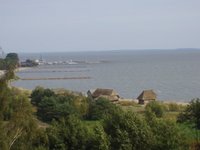
Yesterday, I drove to the beach far away from home in the evening, played a CD by Ennio Morricone, and felt like a heroine in an Italian movie. The music was playing (so serene) and it doesn't matter what worries I had, dogs were playing, a boy was flying a kite, seagulls were flying against the waves -- all so distant and separated from my world.
Wednesday, May 17, 2006
Education in trouble?
Education is in trouble. Every generation has probably thought that.
The difficulty centers around resources, and as business controls the agenda, or as computers do more and more, we push out the human spirit. Furthermore, educators want students to learn more. And what do they do? They give them more tests – more standardized tests. One may ask, do students necessarily learn more if they are given more tests? And do they even learn more if given more information? As recent studies comparing results and curriculum content with various countries suggest, maybe the problem with the countries showing weak educational standards is that they are trying to teach their students too much. Perhaps deeper comprehension is better than a broad familiarity with a subject. The old adage may indeed be true, that less is more.
To better exemplify the view, let us take a look how far away we are today in our education from where the Greeks were. On the road to produce such minds as Plato and Aristotle, did Socrates care about a midterm exam when he was Plato’s teacher? Did Plato say to his student Aristotle – a twenty-page paper, no less? Perhaps what’s missing today is guidance by the natural desire in students to learn – literally the Latin word, educare, to draw out, meaning that knowledge is coming from within, and not imposed from without. Over three hundred years ago Galileo said, “You cannot teach a man anything; you can only help him to find it within himself”. But now we know that he was full of shit.
The difficulty centers around resources, and as business controls the agenda, or as computers do more and more, we push out the human spirit. Furthermore, educators want students to learn more. And what do they do? They give them more tests – more standardized tests. One may ask, do students necessarily learn more if they are given more tests? And do they even learn more if given more information? As recent studies comparing results and curriculum content with various countries suggest, maybe the problem with the countries showing weak educational standards is that they are trying to teach their students too much. Perhaps deeper comprehension is better than a broad familiarity with a subject. The old adage may indeed be true, that less is more.
To better exemplify the view, let us take a look how far away we are today in our education from where the Greeks were. On the road to produce such minds as Plato and Aristotle, did Socrates care about a midterm exam when he was Plato’s teacher? Did Plato say to his student Aristotle – a twenty-page paper, no less? Perhaps what’s missing today is guidance by the natural desire in students to learn – literally the Latin word, educare, to draw out, meaning that knowledge is coming from within, and not imposed from without. Over three hundred years ago Galileo said, “You cannot teach a man anything; you can only help him to find it within himself”. But now we know that he was full of shit.
Circles and Squares: Man in the Box
 "That's so square". "Don't paint yourself into a corner". "Think outside the box". "You can't fit a square peg into a round hole". "The earth is round". "Cut corners". "Going round and round in circles". "Let's roll". "Let's have a ball". "Like a rolling stone". "What goes around, comes around". Why is it that man is fascinated with circles, but keeps making boxes to hold everything, including himself?
"That's so square". "Don't paint yourself into a corner". "Think outside the box". "You can't fit a square peg into a round hole". "The earth is round". "Cut corners". "Going round and round in circles". "Let's roll". "Let's have a ball". "Like a rolling stone". "What goes around, comes around". Why is it that man is fascinated with circles, but keeps making boxes to hold everything, including himself?To make the leap from paleontology to psychology, I would like to pick up the story thirty million years ago, when the last ice age receded, and the earth – round, spinning on its axis and warmed by its orbit around the fiery ball of sun – began to blossom with life. 'Blossom' we say, thinking of buds. Did they not spring from seeds, various, but which are also round? There is no need to ask what came first, the chicken or the egg? From pelagic creatures still swimming in the sea or crawling on the mud to mutate into something else, to dinosaurs, the eggs have it. When mammals evolved, they, too, started as round eggs fertilized by sperm, and fetuses rolled up in a round fetal position.
Biology is not my field, and to minimize the risk of being trite and tedious inherent in telling someone what they already know, let us skip through the ages to make the leap to man. For our purposes, the man I have in mind was Greek. I saw him pictured on a Greek vase, running, right arm forward, left arm back, slightly lower than the right. His head was tilted a little forward, his legs spread wide apart, the right foot was flexed, its ball touching the ground, the left one was arched in back, heel up to waist level, about to start its pendulum swing to take the place of the right foot. If you took a drawing compass, stuck its point into the Greek's torso, and drew a circumference around the man touching the end of any extremity, you'd have a circle touching the end of all his extremities. The running man was moving in a circle, like doing cartwheels.
How supple his movement seemed, and I wondered if the Greeks, in their simple, uncluttered and precise observation of living close to nature and liking to think about things, saw something about life, energy, movement and freedom that modern man can't see? I thought about goose-stepping Nazi soldiers, goose-stepping Russians, North Koreans, Chinese, contrasted with the easy gait of marching Americans. Indeed, when you think about it, the less freedom there is in a country, the more rigid the soldiers, the leaders and society itself – including education. In that light, the light of enlightenment, movement must be considered from a metapsychological aspect. Even the fact that in totalitarian societies people couldn't even leave town without a passport bears consideration.
Surrounding me I see freedom juxtaposed with rigidity. Just to digress for a second, is there anything to the fact that Paris is laid out in concentric circles and Chicago in a geometric grid? Probably not, although I suspect, yes – too nebulous to prove. Nevertheless, just as civilization everywhere organizes itself in grids and quadrants, so many educators are bound up in a box as well. You may see them on the campus – watch them, they are walking bricks. Two stiff legs goose-stepping from underneath a rigid body. If these walking bricks teachers, they are pedants, teachers more concerned with formatting than thinking. They cannot see the forest for the trees, because their bodies, eyes and brains are locked in fear.
So what goes around, comes around. In a man-made world of boxes, we want to open up. We want to think outside the box and let our minds run unbridled like the Greek runner on that vase. At the same time, when someone does escape the boundaries set by the builders of our walls – while few in proportion, there have been many, Freud is one example, Reich, who died in prison, is an even better one – the walls come crashing down to drown their voices out. If a little knowledge is a dangerous thing, great knowledge even more so. Are we really free? As we ponder that question, we had better be careful.

